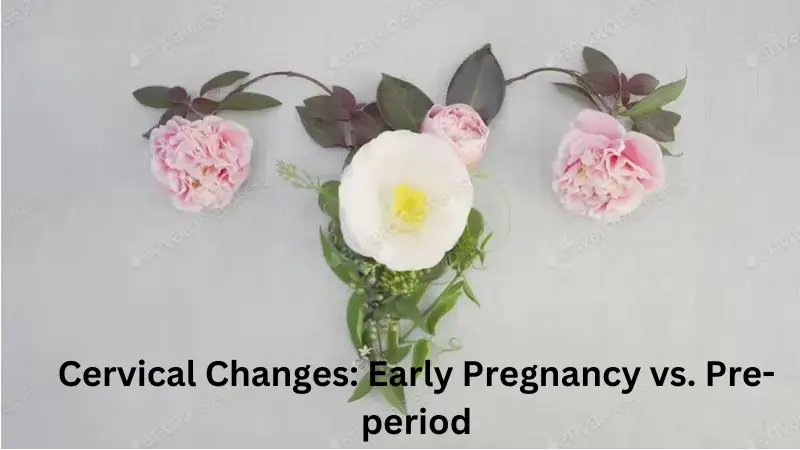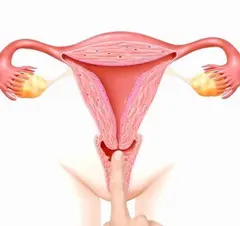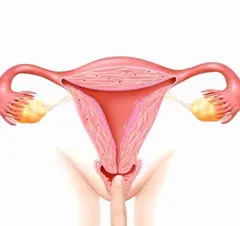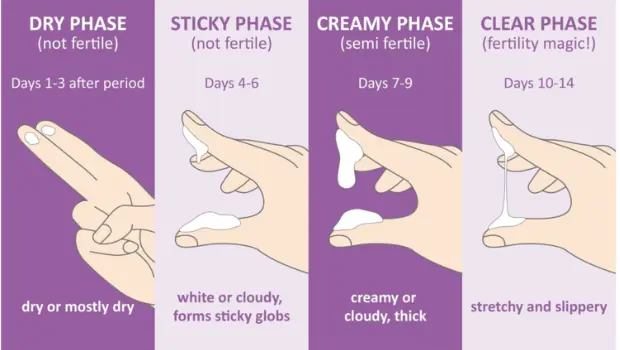
Are you curious about the cervical changes before your period or during early pregnancy? You might be surprised to learn that this small but mighty organ undergoes some fascinating transformations throughout your reproductive journey. From fluctuating hormone levels to preparing for potential pregnancy, your cervix is constantly adapting. By understanding the nuances of these changes, you can gain insight into your body and perhaps even uncover some unexpected symptoms. So, settle in and let’s dive deeper into the world of cervix changes – you won’t want to miss this!
Cervical Changes: Early Pregnancy vs. Pre-period
The cervix, a tubular, circular band of muscular tissue that separates the vagina from the uterus, undergoes significant transformations before and after conception. Measuring between 3 to 5 centimeters in length, the cervix feels like a spherical object situated high inside the vaginal cavity. Positioned between the lower uterus and the vagina, the cervix acts as a gateway from the vagina to the uterus, allowing sperm to travel through the cervical opening to fertilize the egg.
Monitoring cervical changes is crucial in identifying early pregnancy, even before taking a pregnancy test. The cervix is dynamic, and detecting alterations may assist in identifying the fertile window, which is the optimal time to engage in sexual activity. Tracking these changes can also help determine when ovulation occurs and when one is most fertile. Understanding what to look for can enable individuals to detect early signs of pregnancy earlier than expected.
Have you ever wondered how to detect cervical changes? Contrary to popular belief, you don’t need to be a medical professional or have any specialized equipment to do so. Normally, doctors use a speculum to access the cervix, but you can do it yourself with your own fingers in the comfort of your own home. Although the cervix is situated quite deeply within your body, it is still within your reach and you can detect any changes through tactile examination. However, there are times when it may not be palpable or within reach, which can be due to a variety of factors.
Nonetheless, these are typically harmless and may be caused by a long vaginal canal, ovulation, or even post-ovulation. Before we delve into how to detect cervical changes, let’s take a look at what changes you should be looking for.
Cervical Changes
You can observe variations in the cervix during the follicular phase, ovulation, luteal phase, menstruation, intercourse, conception, early pregnancy, and after pregnancy. There are four changes you can detect through palpation, namely position, texture or tissue softness, cervical discharge, and cervical opening. These changes can even occur during sexual intercourse, which is why it is not recommended to conduct a pregnancy test right after engaging in sexual activity.
Once you are at ease, examine your cervix for these changes:
Position
The cervix, situated in two positions, high and low, provides important information regarding various aspects of a woman’s reproductive cycle or hormonal alterations. Knowledge of cervix position can help a person who uses a menstrual cup to choose the right cup size and whether or not to trim the stem.
In the lead up to ovulation, the cervix moves up and high to prepare for conception, the point in the menstrual cycle when the ovaries release an egg. The cervix may be so high during this period that it is impossible to reach it with your fingers. This is considered the best time to engage in sexual activity. Following the absence of conception, the cervix descends to its usual position to enable menstrual tissue to pass through the vagina. However, if conception occurs, the cervix will remain higher in the vagina, similar to its position during ovulation.

The knuckle rule is a simple method to check the position of your cervix. First, you need to wash your hands thoroughly and find a comfortable position. Then, insert your middle or index finger into your vagina until you reach the cervix. The cervix feels like a small, round, and firm bump at the end of the vaginal canal.



Next, pay attention to how far your finger can go inside. If you can reach your cervix beyond the second and third knuckles, it means you have a high cervix. If your cervix is at the level of your second knuckle, it indicates a medium cervix. However, if you can only reach your cervix up to the first knuckle, it means you have a low cervix or a short vaginal canal.
Texture

In addition to position, cervix texture can also change throughout your menstrual cycle. Before ovulation, the cervix is firm to the touch, similar to the tip of the nose. However, as you approach ovulation and become more fertile, estrogen softens the cervical tissue, making it feel as soft as your lips. In some cases, the cervix can become super soft, blending in with the vaginal walls, indicating the ideal time to have sexual intercourse.
Discharge

Cervical mucus or discharge is a crucial element of your reproductive system, as it aids the passage of sperm into the uterus during ovulation. Furthermore, it provides essential nutrients for sperm and maintains a suitable pH level for their survival.
Cervical discharge, also known as vaginal discharge or cervical fluid, serves a dual purpose of keeping the vagina clean and providing vital information regarding menstrual periods and pregnancy. The same hormones that regulate other changes in your body also impact cervical discharge.
During non-ovulation periods, the discharge is notably thicker and viscous to safeguard against foreign organisms, similar to how nasal mucus protects the respiratory tract. As you approach ovulation, the discharge becomes sticky and takes on a white or yellow appearance. The discharge’s texture changes again, becoming opaque and creamy, in the days leading up to ovulation.
When ovulating, the discharge becomes akin to egg white, stretchy and thin. Following ovulation, if you conceive, the discharge will increase in volume and take on a clear, thick, and sticky texture. This occurs due to the heightened production of glandular cells that form the mucus plug that protects your uterus and baby from infection. If conception does not occur, the discharge will dry and thicken. Before menstruation, cervical mucus will be white, followed by a reduction in volume and vaginal dryness for a period of three to four days.
Opening
Visualize your cervix as a soft, diminutive ball measuring roughly 3 centimeters in diameter. At the center of this ball lies a minute indentation, known as the external os, which can vary in shape and size among women. It is shaped like a horizontal dimple and may be slightly open or completely sealed shut. You can explore the external portion of your cervix, or ectocervix, which extends outward into the top of your vagina, to locate the external os.
Prior to ovulation, the cervix will be slightly ajar, not exceeding a thin slit. It opens during and just before menstruation to allow menstrual blood to flow out, and subsequently closes after the menstrual period.
Immediately after ovulation (or several hours and even several days), the opening will be closed. Even during pregnancy, the opening will be closed until the third trimester. During childbirth, the cervix undergoes a dramatic transformation from being tightly shut to stretching up to 10 centimeters wide and thinning or effacing completely.
Related: Vaginal Discharge During Pregnancy
Tips for Checking Your Cervix
Checking your cervix is an essential part of women’s health, and it’s important to do it correctly to avoid any potential harm. Here are some tips to help you check your cervix safely and effectively.
Be Patient and Get Familiar with Your Cervix
It’s important to be patient and take your time to understand what you’re feeling. Becoming familiar with your own cervix and where it sits can make the process easier. If you’re checking for the first time, don’t expect to locate it right away. Keep practicing and be patient.
Check Every Other Day
Try to check your cervical position every other day, even when you’re not ovulating. It’s easier to locate the cervix when you’re not ovulating, and checking at the same time each day can help you detect any changes more accurately.
Check After Showering
It’s best to check your cervix right after showering when your fingers are clean to avoid any potential infection. Plus, you’ll be more relaxed and comfortable after a shower.
Keep a Journal
To detect pregnancy, check your cervix daily throughout your cycle. It may be difficult at the beginning, so keep a journal to monitor any differences. This way, you can gauge your cervical changes after a month of checking.
Don’t Check During or After Sex
The cervix actually moves around depending on the level of sexual arousal, so it’s important not to check its position during or after sex.
Avoid Checking with Infections
If you have a yeast or vaginal infection, or a urinary tract infection (UTI), don’t insert your finger inside your vagina to check your cervix. Instead, consider buying a self-exam kit with a reusable speculum, flashlight, mirror, and additional instructions.
Don’t Check If Your Water Just Broke
If you’re pregnant and your water just broke, it’s important not to check your cervix. This can introduce bacteria into your vagina and increase the risk of infection.
How to Check Your Cervix at Home: Step-by-Step Guide
Although everyone’s anatomy is unique, locating the cervix is possible by inserting a finger (usually the middle finger) into the vagina and measuring the depth. Consistently monitoring the cervix’s position over several menstrual cycles can help establish a baseline, and determine whether it’s in a high or low position.
It’s essential to understand the cervix’s typical position and how it feels to get an accurate result. Here are the step-by-step instructions for checking your cervix, which you can follow to understand the process better. If you’re nervous, keep in mind that you won’t cause any harm.
Step 1: Empty Your Bladder
Before you start checking your cervix, make sure you empty your bladder. A full bladder can make it difficult to locate and feel your cervix.
Step 2: Wash Your Hands
Wash your hands thoroughly with warm water and antibacterial soap. This is important to avoid introducing any bacteria from your fingers or vaginal canal into your body. Make sure your hands and fingernails are clean and dry before you insert them inside your body.
Step 3: Get Comfy
Get into a comfortable position that allows you easy access to your cervix. You can stand with one foot elevated on the toilet seat or a step stool, or you can squat. Whatever position you choose, remember to relax your vaginal muscles. It’s best to check the cervix at the same time and from the same position every day.
Step 4: Use a Mirror
If you’re a first-time checker, you may want to use a mirror to help you locate your cervix. Place the mirror underneath your pelvis and separate your labia to see your cervix clearly.
Step 5: Lubricate (Optional)
Lubrication is optional, but it can make the process more comfortable. If you choose to use lubrication, make sure it’s water-based to avoid damaging condoms or causing irritation.
Step 6: Insert Your Finger
Using your dominant hand, insert your middle or index finger (or both!) into your vagina. You may need to go a few inches to locate your cervix. You’ll feel a difference in the texture of your skin as you get closer to your cervix.
Step 7: Determine the Position of Your Cervix
Depending on how far your finger goes inside, you can determine the position of your cervix. It could be in a low position, or it could be high. It’s important to note that everyone’s cervix is different, and its position can change throughout your menstrual cycle.
Step 8: Feel the Texture of Your Cervix
Now that you’ve located your cervix, feel its texture. Is it soft or firm? The texture can change based on where you are in your menstrual cycle. Feel the middle of your cervix for the opening, which can also indicate where you are in your cycle.
Step 9: Record Your Observations
Take note of your observations on cervical changes, including the position and texture of your cervix. Your cervix will be high when you’re ovulating or pregnant and low when your menstrual period is about to start. A soft texture indicates fertility and ovulation, while a firm texture indicates infertility or pregnancy.
Checking your cervix can be a helpful tool to predict ovulation and fertility. However, it’s important to note that it’s not a reliable method to determine pregnancy. Your cervix starts to change position and texture immediately after conception, so checking your cervix alone doesn’t confirm pregnancy.
If you want to be sure you’re pregnant, use a pregnancy test or visit a gynecologist for a blood test. Don’t rely solely on checking your cervix for confirmation.
When to go See a Doctor?
Taking care of your reproductive health is important, and checking your cervix can be a useful way to monitor any changes. It’s important to seek medical attention right away if you notice any:
- Unusual lumps, bumps, or discoloration
- Abnormal cervical discharge that is green, bloody, or foul-smelling
- Vagina itching or pain
Final Thoughts
Remember, there’s no shame in being curious about your own body and wanting to learn more. So don’t be afraid to take the time to explore and understand the changes your cervix goes through over time. And if you feel comfortable, feel free to let your partner lend a helping hand!
But above all, it’s important to go at your own pace and only do what feels right and comfortable for you. So take care of yourself and your health, and don’t hesitate to reach out to a medical professional if you have any concerns.
Related: Bleeding During Pregnancy: What’s Normal and What’s Not
Frequently Asked Questions
Can Your Cervix Change During Your Period?
Yes, your cervix can change during your period. It may feel lower and softer, and the cervical os may be slightly open to allow menstrual blood to flow out.
Can Your Cervix Change Multiple Times During Your Menstrual Cycle?
Yes, your cervix can change multiple times during your menstrual cycle. It can change position, texture, and cervical mucus throughout your cycle as your body prepares for ovulation and menstruation.
How Soon Can Changes In Your Cervix Indicate Pregnancy?
Changes in your cervix can occur as early as a few days after conception, but it is more common for changes to occur after a missed period.




